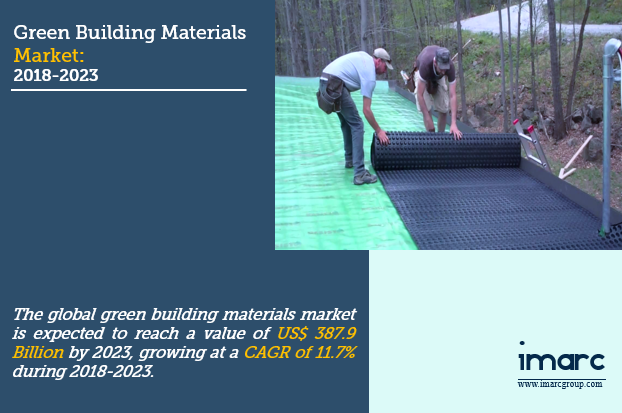Green building refers to the practice of increasing the water, energy and material utilization efficiency of a building. It also focuses on reducing the negative impact of construction on the environment as well as human health with the help of better design, operation, siting and maintenance. The materials used for constructing green buildings are evaluated by their resource and energy efficiency, the effect on indoor quality, water conservation and affordability. Green building materials are reusable, durable, locally available, harvested from sustainably managed sources and have identifiable recycled content. Additionally, these materials help in improving the indoor air quality as they are non-toxic, moisture resistant, and have minimal chemical emissions. In the near future, the concept of green buildings is anticipated to gain popularity across the globe with the introduction of innovative products like smart glass, air-cleaning materials, net-zero buildings and electricity generating glass. According to IMARC Group, the green building materials market size was estimated to be around US$ 200 Billion in 2017. Looking forward, the green building materials market is expected to reach nearly US$ 388 Billion by 2023, at a projected CAGR of more than 11.5% during 2018-2023.

Get free sample report @ https://www.imarcgroup.com/request?type=report&id=983&flag=B
Increasing greenhouse gas emissions to augment the demand for green building materials
Factors such as recovery of the construction market, technological advancements, increasing affordability and easy availability are escalating the demand for green building materials. Moreover, as improving the energy efficiency of buildings has the potential to reduce carbon emissions across the globe, this has promoted the construction of new green buildings along with the retrofitting of existing buildings. Apart from this, the governments of various developed nations have implemented rating systems, incentives and policies to endorse green construction. Some of these rating systems include Building Research Establishment Environmental Assessment Method (BREEAM), Green Building Evaluation Labeling (GBEL) and Leadership in Energy and Environmental Design (LEED).Insulation represents the most popular application segment
The green building materials market report has analyzed the various applications of these materials which include insulation, roofing, framing, interior finishing and exterior siding. Green building materials are mostly used for insulation on account of the high levels of energy conservation offered by them. Additionally, there has been a rapid rise in the installation of interior insulation solutions across both the residential and commercial sectors. Similarly, roofing is also gaining momentum as a major application segment of green building materials owing to an increase in the demand for recycled, non-toxic, durable and weather-resistant rubber roofing solutions.Europe is the leading market for green building materials
On a geographical basis, Europe enjoys the leading position in the market, holding the majority of the total share. The presence of numerous incentives and strict regulations regarding the utilization of green building technology in retrofitting and renovation applications is driving the market. The other major markets include North America, Asia Pacific, Middle East and Africa, and Latin America.The global green building materials market is fragmented in nature, characterized by the presence of various small and large players. Some of the key global players operating in this market include Alumasc Group Plc, Bauder Limited, Binderholz GmbH, CertainTeed Corporation; RedBuilt, LLC; PPG Industries, DuPont, Forbo International SA, Lafarge, Interface Inc., Kingspan Group plc, BASF SE, Owens Corning and National Fiber.